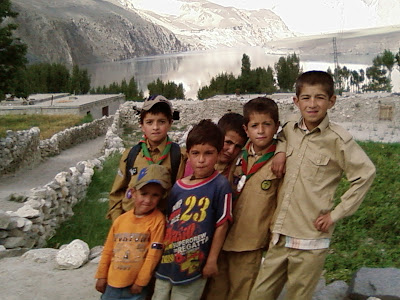prove your self as assets of Islamic society, Teachers more respected than any other relation, their priority must be character building of their students says Wazir Baig
 Speaking to the occasion, chief guest Mr.Wazir Baig said that it was human intellect that enabled him to get out of stone age and enter into modern era.He said that it was time of competition and adoption of ideas of Iqbal lead us a sucessful life saying continuous effort and self accountability and conscience was pre-requisite to be successful in all wakes of life. He said that biggest differece between human being and other creatures was learnign and reasoning power, adviced them to work hard to discover miracles of nature. He said mere a little portion of God's creation discover and much more was still unknown yet.
Speaking to the occasion, chief guest Mr.Wazir Baig said that it was human intellect that enabled him to get out of stone age and enter into modern era.He said that it was time of competition and adoption of ideas of Iqbal lead us a sucessful life saying continuous effort and self accountability and conscience was pre-requisite to be successful in all wakes of life. He said that biggest differece between human being and other creatures was learnign and reasoning power, adviced them to work hard to discover miracles of nature. He said mere a little portion of God's creation discover and much more was still unknown yet.
He said that running of half a dozen private and government colleges was a tangible proof that our youth was following the message of Iqbal.
 Hunza: Students listening to the interim governor Wazir Baig, carefully. VoH Photo
Hunza: Students listening to the interim governor Wazir Baig, carefully. VoH Photo
He emphasized teachers to make efforts to build character of youngsters. He further said that Gilgit-Baltistan government is doing according its capacity to ensure quality education and health facilities. He said that an ing (MoU) for a mega projet has been signed between Aga Khan Foundation (AKF) and an Australian donner agency to upgrade quality of education and other facilities saying the project would bring academic revolution. He said he has discussed with a educational NGO named Mountain Institute for Educational Development, working in different districts of Gilgit-Baltistan. " An official of this revolutionary institute has expressed willingness to work in Hunza-Nagar too," he added.
Readers Time Report
By:Shams
HUNZA, December: Young generation especially youth are our future strength, they must devote themselves for curricular and co-curricular activities, teachers are more respected and relation with their student was much honorable than any other; learners ought to work hard to keep the pace with dynamic world. These views were stated by Interim governor and speaker Gilgit-Baltistan Legislative Assembly in a speech and kalam-e-Iqbal recitation competition among colleges to commemorate doctor Allama Iqbal's literary serivices organized by Literary cirles e government girls inter college,Karimabad,Hunza. The theme of programme was 'Hayat Zoque safar k siva kutch oar Nahi'comprised of first session with speech competition on the theme followed by Kalam-e-Iqbal recitation. Speakers shed light on literary work of poet of Eeast doctor Allama Iqbal, qouted his ideas and kept emphasis on young sould to adopt the in their practical life to avail a satisfied life. Speaking to the occasion, chief guest Mr.Wazir Baig said that it was human intellect that enabled him to get out of stone age and enter into modern era.He said that it was time of competition and adoption of ideas of Iqbal lead us a sucessful life saying continuous effort and self accountability and conscience was pre-requisite to be successful in all wakes of life. He said that biggest differece between human being and other creatures was learnign and reasoning power, adviced them to work hard to discover miracles of nature. He said mere a little portion of God's creation discover and much more was still unknown yet.
Speaking to the occasion, chief guest Mr.Wazir Baig said that it was human intellect that enabled him to get out of stone age and enter into modern era.He said that it was time of competition and adoption of ideas of Iqbal lead us a sucessful life saying continuous effort and self accountability and conscience was pre-requisite to be successful in all wakes of life. He said that biggest differece between human being and other creatures was learnign and reasoning power, adviced them to work hard to discover miracles of nature. He said mere a little portion of God's creation discover and much more was still unknown yet. He said that running of half a dozen private and government colleges was a tangible proof that our youth was following the message of Iqbal.
He emphasized teachers to make efforts to build character of youngsters. He further said that Gilgit-Baltistan government is doing according its capacity to ensure quality education and health facilities. He said that an ing (MoU) for a mega projet has been signed between Aga Khan Foundation (AKF) and an Australian donner agency to upgrade quality of education and other facilities saying the project would bring academic revolution. He said he has discussed with a educational NGO named Mountain Institute for Educational Development, working in different districts of Gilgit-Baltistan. " An official of this revolutionary institute has expressed willingness to work in Hunza-Nagar too," he added.






